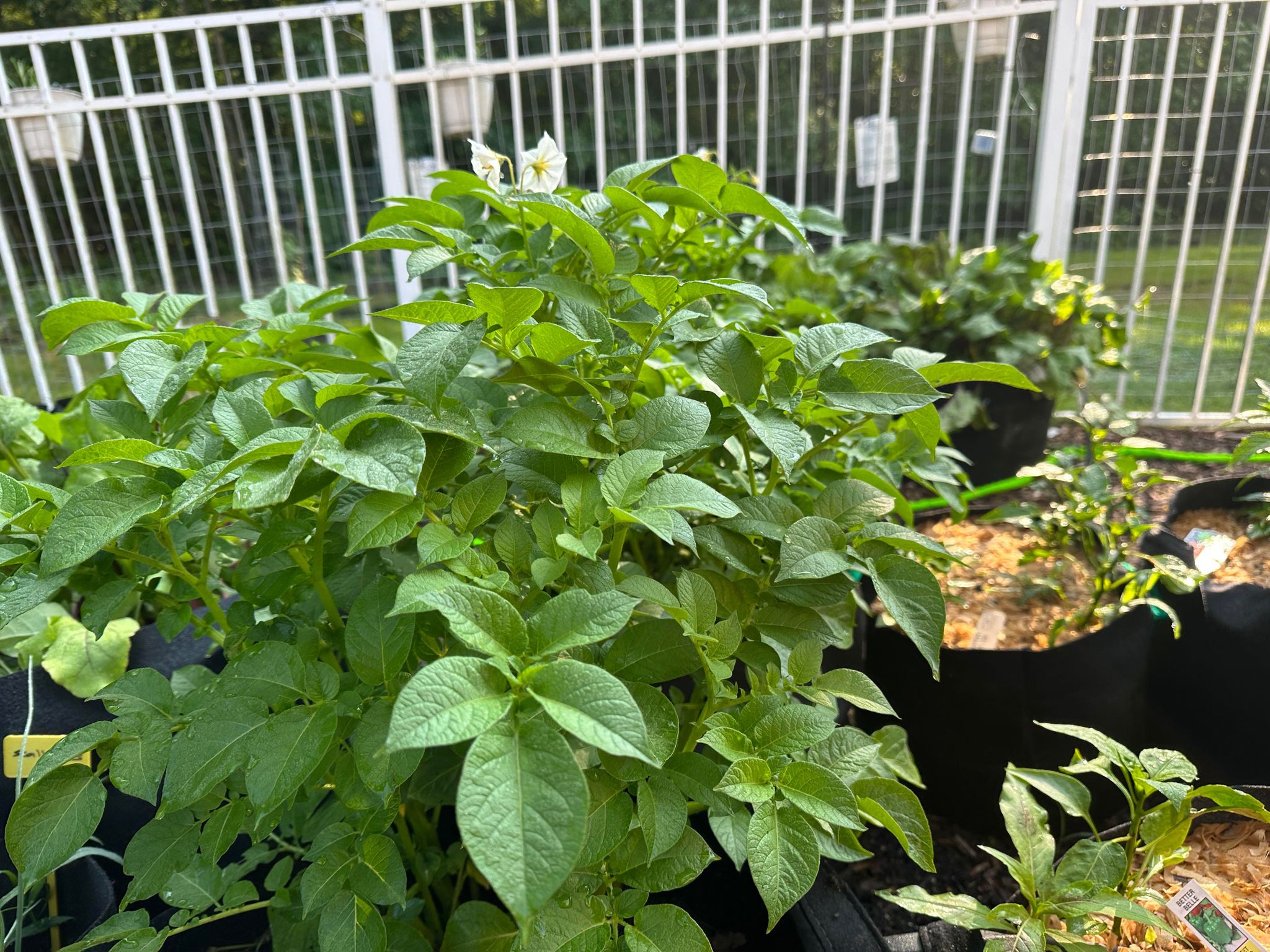Summer is drawing near and you might notice out in your Jersey garden that some of the potatoes you planted earlier this spring are now flowering, but what does it mean? Are they ready to harvest?
Potatoes are a beloved crop in many home gardens, known for their versatility and deliciousness. As you nurture your potato plants, you may notice the emergence of vibrant flowers atop their leafy foliage. Potato flowering is a natural stage in the plant’s lifecycle, signaling important changes and providing insights into the health and potential yield of your potato crop.
When potato plants reach a certain level of maturity, they transition into the flowering stage. This typically occurs several weeks after the plants have emerged from the soil and have developed a robust foliage canopy. Flowering is a natural process that indicates the plant’s readiness to shift its energy towards reproduction.
Potato flowers play a crucial role in the reproductive cycle of the plant. While most home gardeners grow potatoes from tubers rather than seeds, the flowering stage is essential for the production of true potato seeds. These seeds, when properly collected, dried, and stored, can be used for breeding new potato varieties or for experimental purposes. However, it’s important to note that most gardeners primarily focus on propagating potatoes through tubers, which are the enlarged underground storage organs.
The appearance of flowers can provide valuable information about when to harvest your potatoes. Generally, early and mid-season potato varieties tend to produce flowers earlier in the growing season compared to late-season varieties. If you’re eager to harvest new potatoes or prefer a more delicate flavor, you can carefully dig around the base of the plants and collect smaller, immature tubers once the flowers have bloomed. For mature tubers suitable for storage, it’s best to wait until the tops of the plants have withered and died back before harvesting.
Potato flowers have the potential to be pollinated by bees, butterflies, and other pollinators, leading to the formation of small, berry-like fruits known as true potato seeds.
These fruits contain seeds that can be collected and sown to grow new potato plants, each with its unique genetic characteristics. However, it’s important to note that growing potatoes from seeds is a more complex and time-consuming process compared to using tubers, as it involves selecting, germinating, and evaluating the resulting seedlings.
Potato flowers exhibit a wide range of colors, including white, pink, purple, and even blue. Some varieties may have single flowers, while others may display double or multiple-petaled blooms. These variations add beauty to your garden and can make the flowering stage an aesthetically pleasing experience.
The emergence of flowers on your potato plants marks an important phase in their growth and development. Potato flowering indicates maturity, provides insights into the optimal time for harvest, and plays a role in reproduction and potential seed formation.
While the majority of home gardeners focus on growing potatoes through tubers rather than seeds, understanding the significance of potato flowering enhances your knowledge of this remarkable plant. So, enjoy the sight of your potato flowers, appreciate their colors and forms, and use them as a guide to harvest your delicious homegrown potatoes at just the right time.

